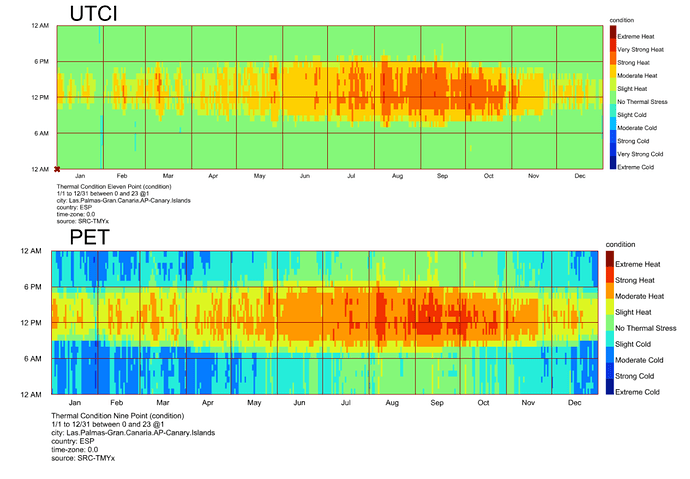Hi,
I’ve been struggling to understand two outdoor comfort indicators and find them quite confusing. The first one, UTCI (Universal Thermal Climate Index), assumes a person walking at 4 km/h (which equals 2.4 metabolic equivalents or met), adaptive clothing insulation, and a wind speed measured at a 10-meter height. The second one, PET (Physiological Equivalent Temperature), requires specific met and clo (clothing insulation) values for its calculations. In my case, I’ve used the same met value as UTCI for a walking person and applied the LB_Clo by temperature method for clo levels—using a clo value of 2 for temperatures below -5°C and 0.46 for temperatures above 26°C.
I expected the results from both indicators to be similar, but they show quite different comfort categories. According to the UTCI results, there’s no sensation of cold at any time of the year. However, the PET results indicate a significant number of hours where the sensation is cold, and the same inconsistency appears when assessing hot sensations. It seems that PET is more sensitive to certain parameters than UTCI, especially when fewer categories are involved.
Does anyone know why this is happening? If so, could you please shed some light on the topic?
Thanks
UTCI vs PET.gh (47.7 KB)
